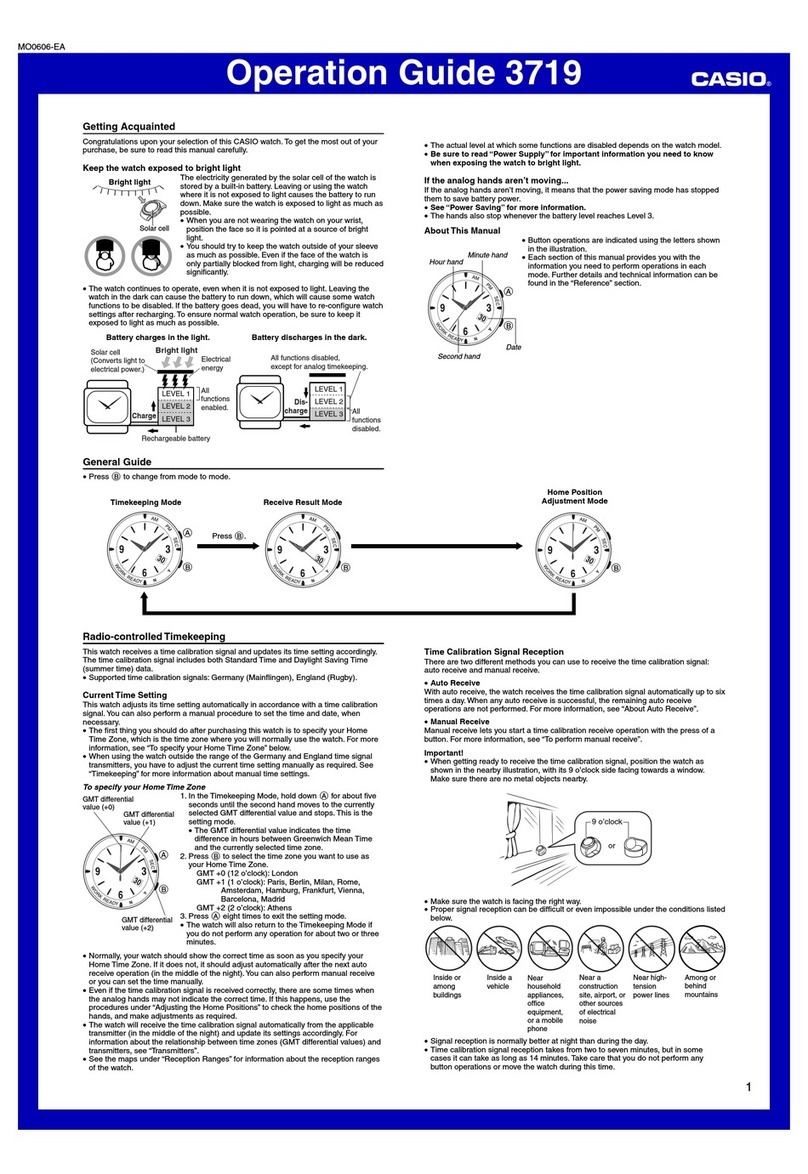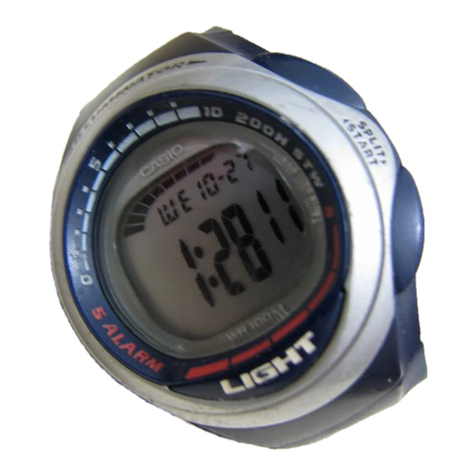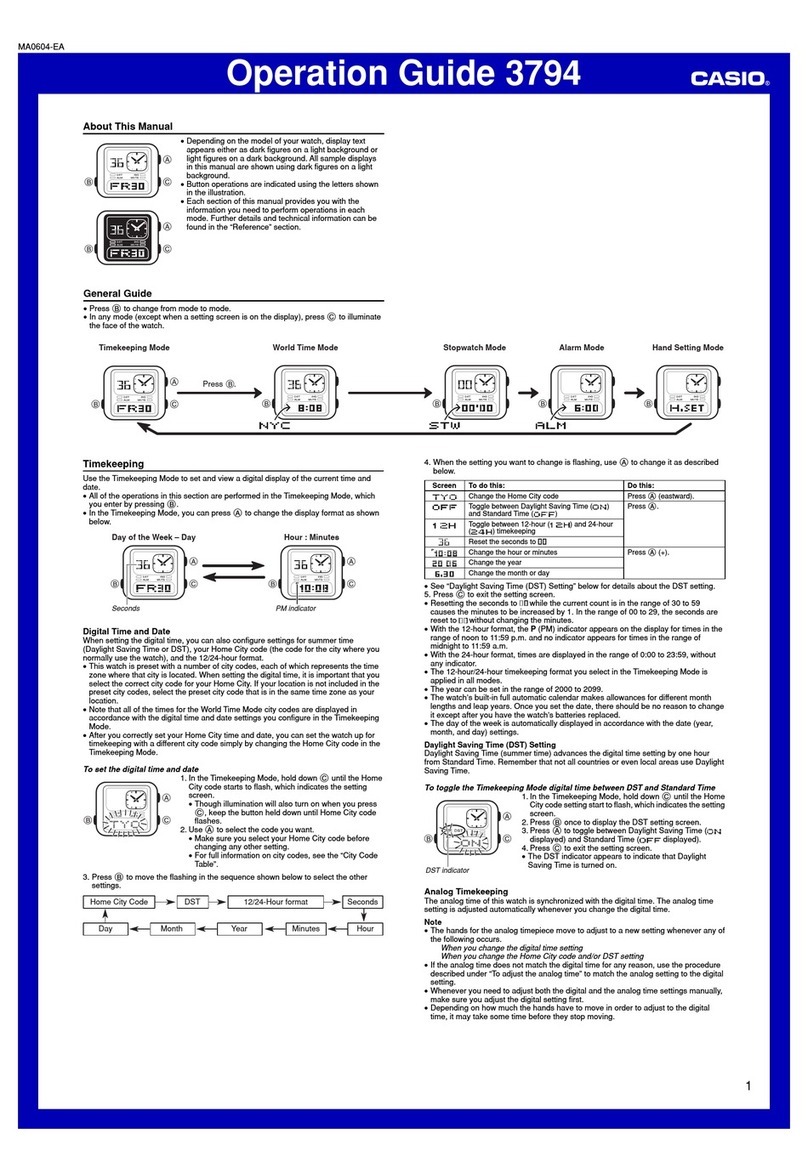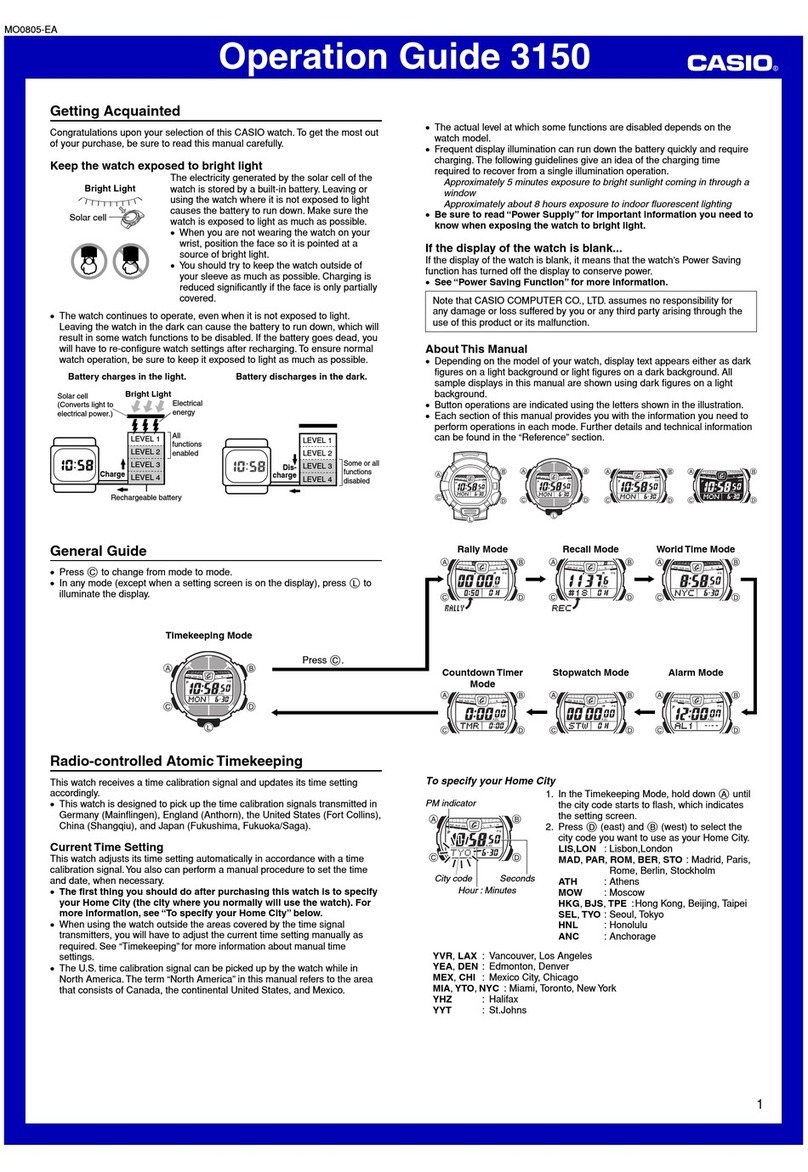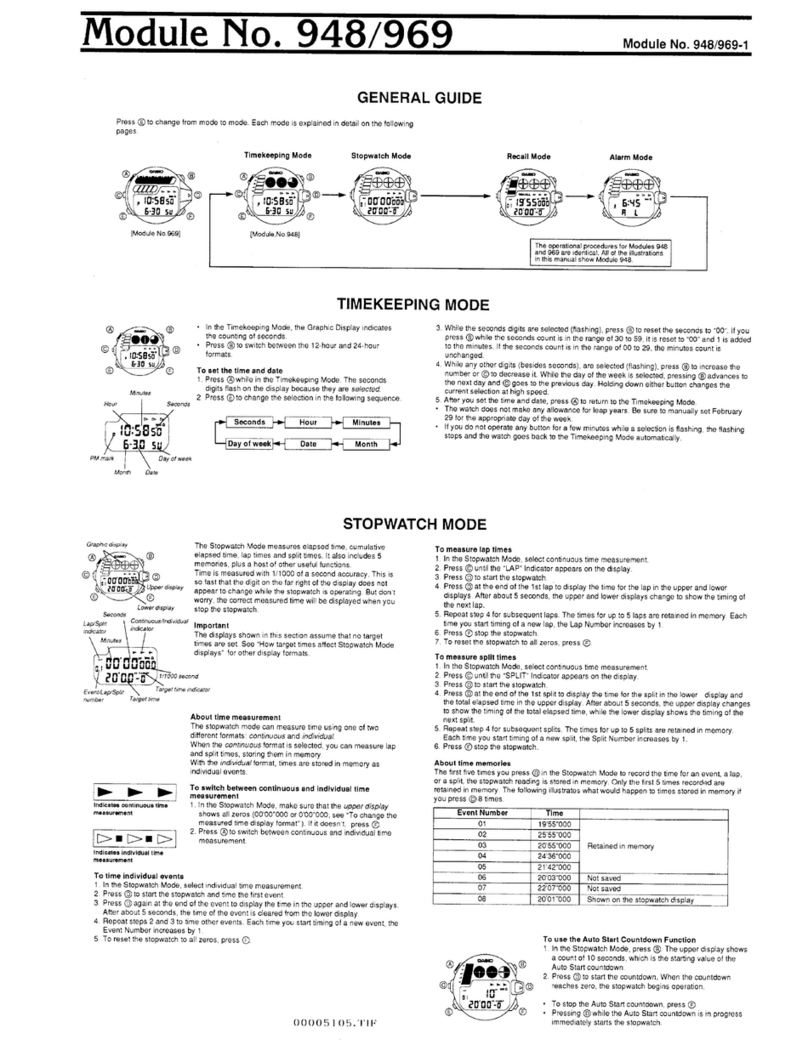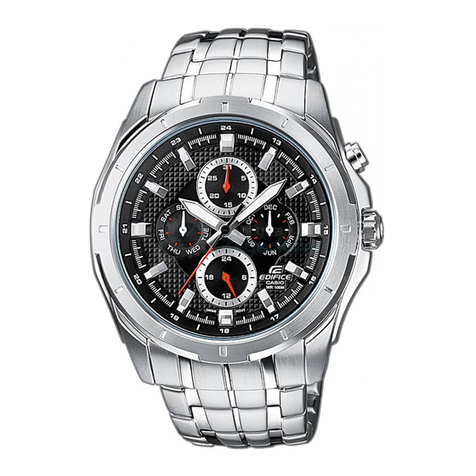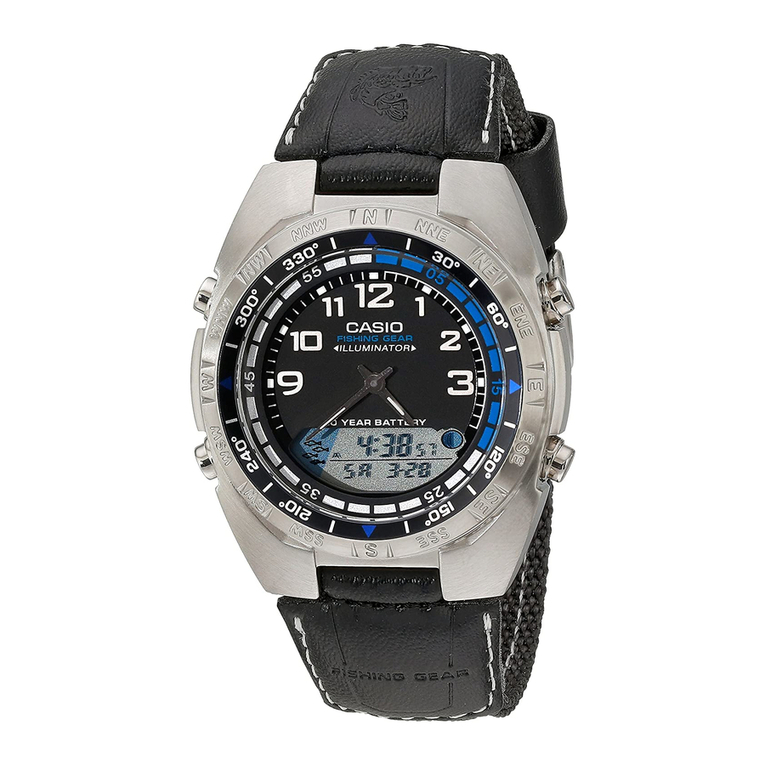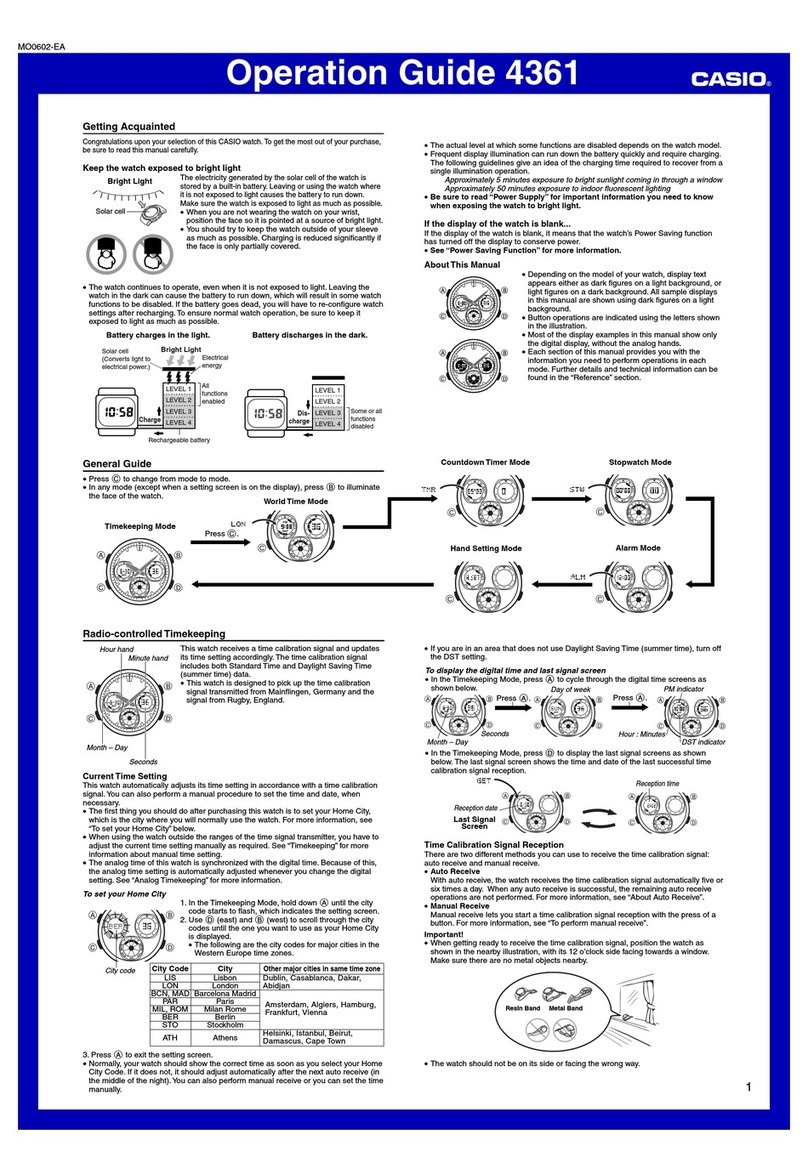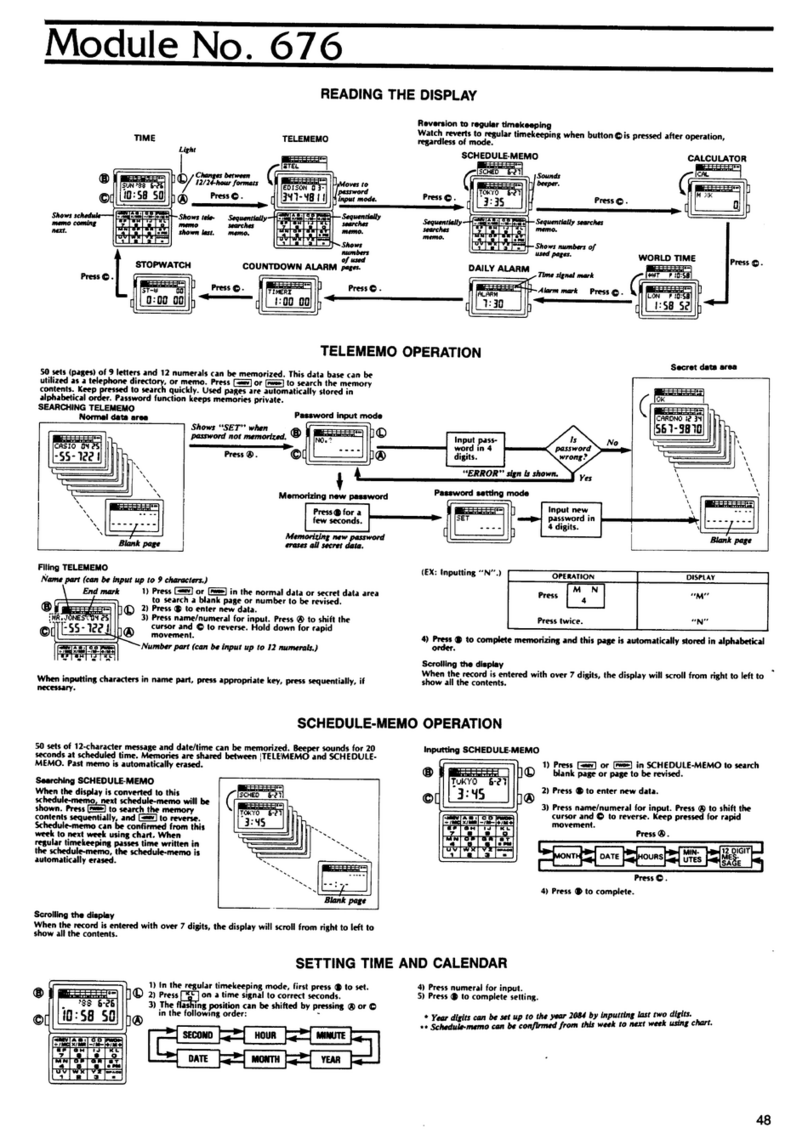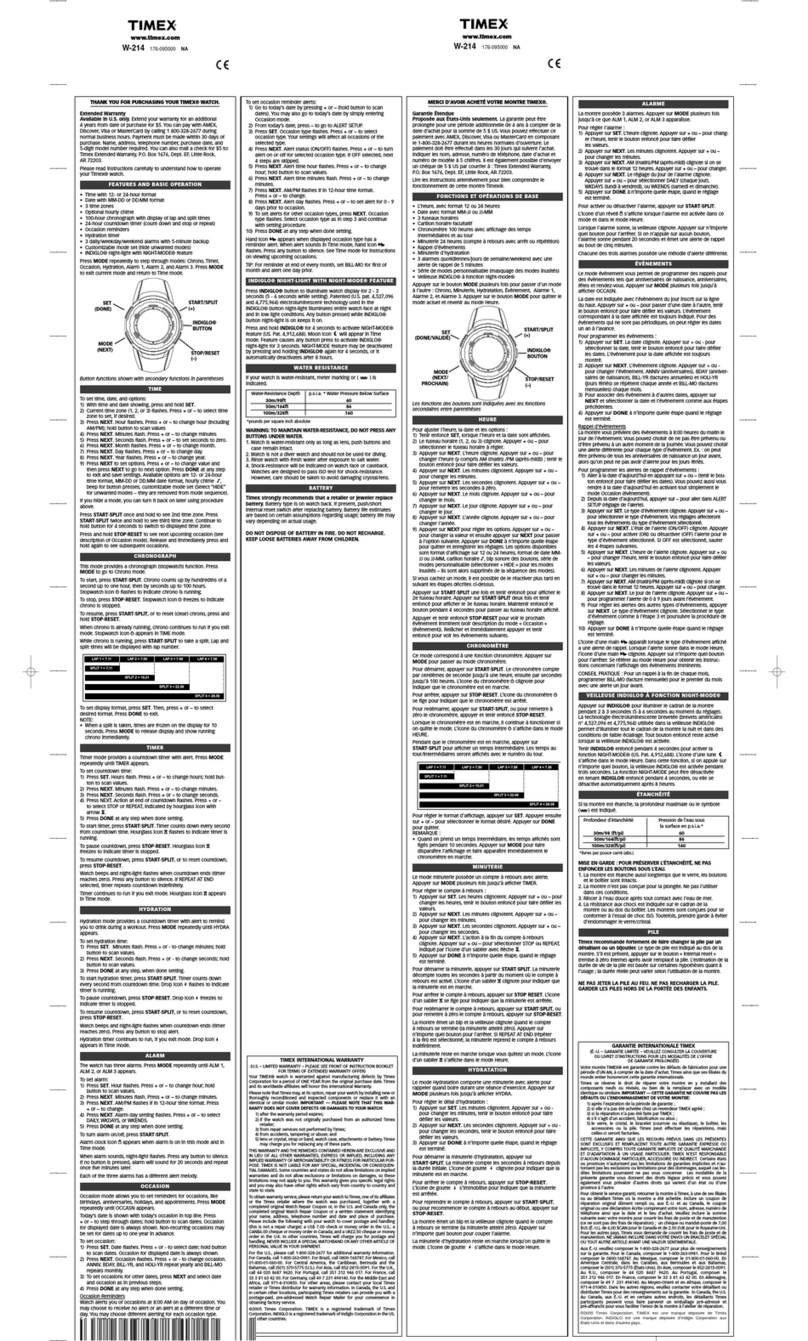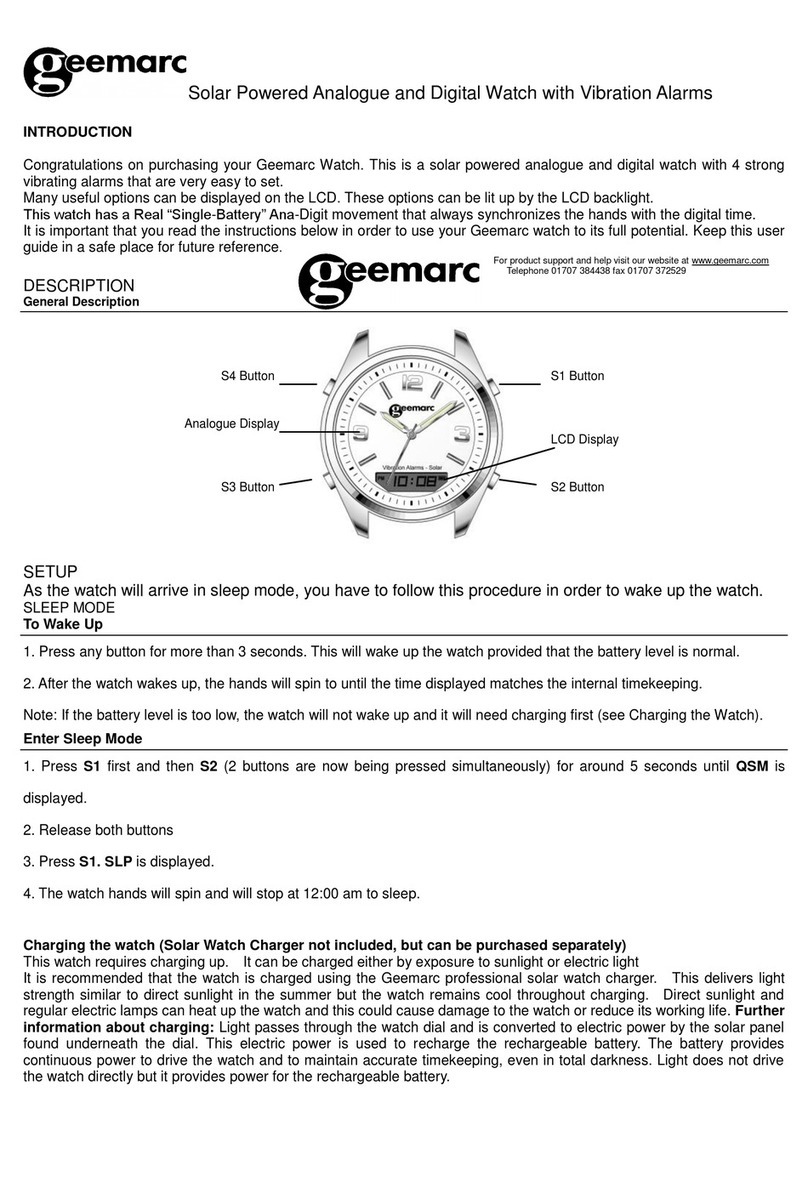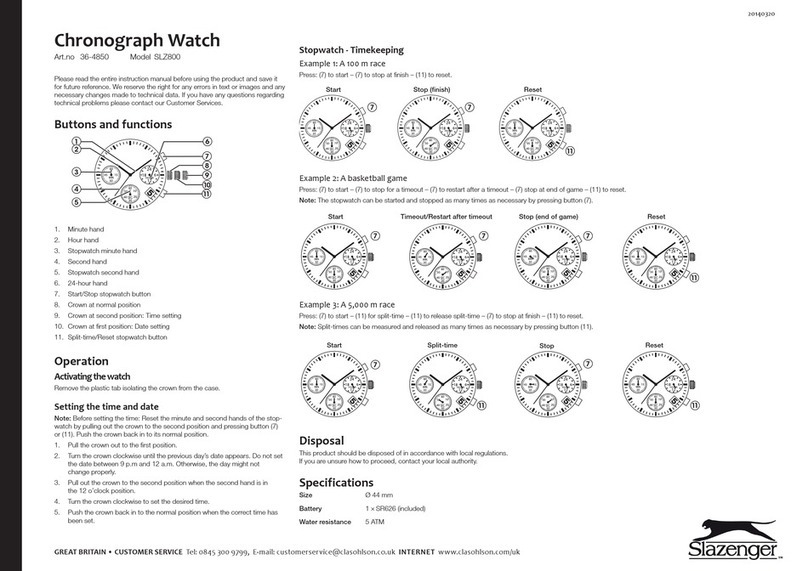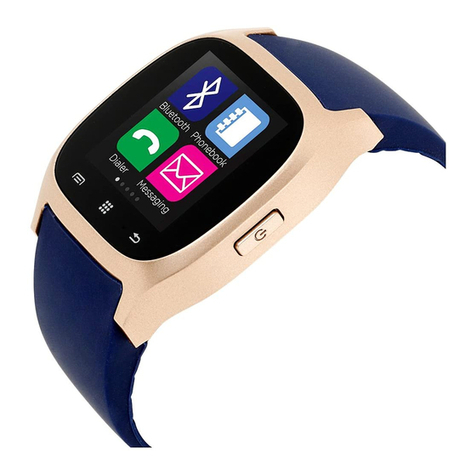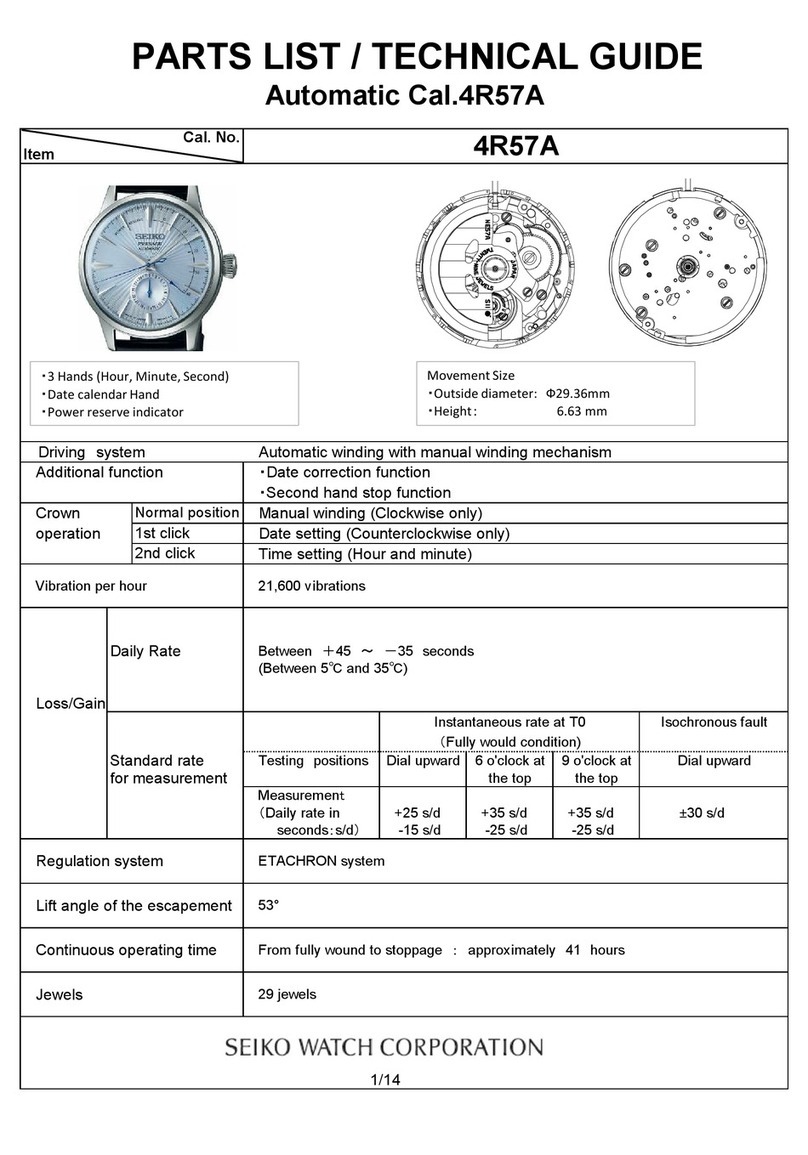
Operation Guide 2931
2
Start charging at Level 3 or 4!
Battery Level 3 or 4 indicates that remaining battery power is very
low. Be sure to expose the watch to light for recharging as soon as
possible after the Level 3 or Level 4 indicator starts to flash.
Frequent display of the recover indicator also means that the
battery is low. Expose the watch to light to charge the battery.
Charging Precautions
Avoid charging the watch in the following locations, and anywhere
else where the watch may become very hot.
•On the dashboard of an automobile parked in the sun
•Very close to an incandescent light source or other sources of
heat
•In a location exposed to direct sunlight for long periods
Note that the display panel may become black under very high
temperatures. This is temporary, and the display will appear
normal again at lower temperatures.
Depending on the light source you are using, the
case of the watch may become quite hot during
charging. Take care to guard against burn injury
after charging.
❚
To charge the battery
Point the solar panel (face) of the watch at a light source.
•Remember that even a partial blockage of the solar cell reduces
charging efficiency.
Example: Positioning the watch
Solar Cell
•The illustration shows the resin band model.
The power supply of this watch uses a solar cell to generate
electrical power, which is stored by a rechargeable battery. Using
or storing the watch where it is not exposed to light regularly or
allowing it to be blocked from light by your sleeve as you are
wearing it can cause the power of the rechargeable battery to run
down. To ensure stable operation, be sure to allow the watch to be
exposed to light as much as possible when you are wearing or
storing it.
Note that all data in memory and all settings are cleared
whenever you allow the level of the rechargeable battery
to drop to Level 5.
Flashing Recover Indicator
If you use the light or alarms a number of times during a short
period, a RECOV indicator flashes on the display and the following
operations become disabled as battery power recovers.
•Illumination
•Alarm and hourly time signal
•Timer Mode progress alert and
time up alarm
•Temperature measurement
•Time calibration signal reception
Normal operation will return after the
battery recovers.
Battery Indicator
All functions enabled.
All functions enabled.
Illumination, alarms and other tones,
temperature measurement, and time
calibration signal reception disabled.
Display, illumination, alarms and other
tones, temperature measurement, and
time calibration signal reception disabled.
All functions, including timekeeping,
disabled.
Level
1
Level
2
Level
3
Level
4
Level
5
•Exposing the watch to direct sunlight or other strong light may
cause the battery level indicator to indicate a level that is
momentarily higher than the actual battery level. Because of this,
you should wait for a short while after charging to check the
battery level indicator.
•Even if the battery level drops all the way to Level 5, you still will
be able to recharge the battery and use the watch again.
•If you start charging from Level 5, the display of the watch will
flash when the battery reaches Level 4. Note, however, that the
watch’s functions will still remain disabled at this time, and you
should continue to expose the watch to light so the battery can
charge up the Level 2 or Level 1.
Recover
Indicator
Power Supply
Charging Guide
Starting from a full charge, the watch
should be able to continue operating
for about eight months without
further charging under the example
conditions described below.
Example Daily Use
•Illumination: 1.5 seconds/day
•Alarm: 10 seconds/day (alternate
between beep and
vibration alert every day)
•Signal Reception: 10 minutes/day
•Digital Display: 18 hours/day
Making sure the watch is exposed
to light regularly ensures stable
operation.
•Charge Times Required to Advance to a Higher Level
Approximate Exposure Time
Level 5 \Level 4 \Level 3 \Level 2 \Level 1
– – – – – –
2 hours
8 hours18 hours
6 hours
10 hours
126 hours
41 hours91 hours
83 hours184 hours
Exposure Level
(Brightness)
Outdoor Sunlight
(50,000 lux)
Sunlight Through a
Window (10,000 lux)
Overcast Daylight
Through a Window
(5,000 lux)
Indoor Fluorescent
Lighting (500 lux)
•Note that the above charging times are for reference only. Actual
charging time depends on a variety of environmental factors.
Required Daily Charging Time
•
The following is the daily amount
of charging required each day to
support the operations under
“Example Daily Use”.
Exposure Level
(Brightness)
Outdoor Sunlight
(50,000 lux)
Sunlight Through a
Window (10,000 lux)
Overcast Daylight
Through a Window
(5,000 lux)
Indoor Fluorescent
Lighting (500 lux)
5 minutes
24 minutes
48 minutes
8 hours
Approximate
Exposure Time
Power Saving causes the watch to enter a sleep state automatically in order to save power whenever it is left in the dark. The Power
Saving feature of the watch is turned on at the factory.
•Note that the watch may also enter the sleep state if the watch is blocked from light by your sleeve.
How the sleep state works
•Display sleep state
The display sleep state is triggered whenever the watch is left in the
dark for about one hour between the hours of 10 p.m. and 6 a.m.
•The watch does not enter the
sleep state if it is in the Timer
Mode or Stopwatch Mode.
•The display sleep state
causes the display to go
blank, except for a flashing
Power Saving indicator.
Alarm, hourly time signal, and
Timer Mode progress alert
and time up alert operate
normally in the display sleep
state.
•Function sleep state
The function sleep state is triggered whenever the watch is left in
the dark for six or seven days.
•The Power Saving indicator stops flashing and remains on the
display. Alert, hourly time signal, and Timer Mode progress
alert and time up alert do not operate in the function sleep
state, and auto receive of the time calibration signal is not
performed.
•Digital timekeeping functions continue to operate normally
in the function sleep state.
❚
To recover from the sleep state
Place the watch in an area that is well-lit, press any button, or
angle the watch toward your face to illuminate the face of the
watch using the full auto light switch (“Positioning Your Arm
Correctly”).
•It can take up to two seconds before display figures re-appear
after you place the watch in a well-lit area.
❚
To turn Power Saving on and off
Use the procedure under “Setting the Home City Time and Date”
to turn Power Saving on or off.
Leaving the watch in a drawer or anywhere else it is dark can
cause Power Saving to trigger in order to conserve battery
power.
Power Saving Indicator
Power Saving
